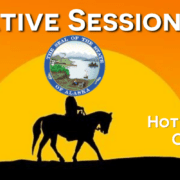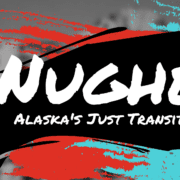[cs_content][cs_element_section _id=”1″ ][cs_element_layout_row _id=”2″ ][cs_element_layout_column _id=”3″ ][cs_element_text _id=”4″ ][cs_content_seo]Households and businesses in Alaska are increasingly producing their own solar power and selling the excess electricity to utilities.
The four major Railbelt utilities from Homer to Fairbanks reported in February that almost 2,000 solar installations are tied into their systems, primarily for small, residential projects.
The numbers have grown rapidly in recent years. That includes in Anchorage, where growth is outpacing several Lower 48 cities, a new study shows.
Solar panel installers, meanwhile, report strong demand for their services. They say homeowners are increasingly signing up after hearing positive reviews from neighbors with their own rooftop arrays.
“In general, solar has been very popular for residential customers who want to reduce their energy bills,” said Chris Pike, with Alaska Center for Energy and Power within the University of Alaska Fairbanks.
Pike installed 12 panels on his roof in Anchorage’s College Village neighborhood a few years ago, something he doesn’t recommend unless people have construction experience like he does.
He cut his annual power bills by more than half, even with trees blocking sunlight.
“It’s what I hoped for and expected,” Pike said. “Depending on your use, you don’t need giant systems to impact your bill.”
Chris Pike, photographed at his home in the Rogers Park neighborhood of Anchorage. (Loren Holmes / ADN)
A research engineer at the Alaska Center for Energy and Power, Pike tracks the number of homes and businesses that produce their own power and sell the excess energy to utilities, under a system called net-metering. The vast majority of those projects are solar panel installations atop homes, cranking out electricity during long summer days.
In the Chugach Electric Association service area that includes Anchorage, close to 600 residential customers had solar installations last year, along with 60 commercial customers, the utility reported in February. Eighty-five new residential projects were added to the system last year alone.
Chugach Electric, the largest electric utility in Alaska, has 92,000 members. So the solar installations are a small part of the utility’s power picture, said Julie Hasquet, a spokeswoman with the utility.
But the utility has taken steps to support more of those solar installations. In February, Chugach Electric requested and received approval from state regulators to expand its ability to allow more solar and other renewable projects through net-metering.
“Increased use of renewable energy is a goal for Chugach and for many Alaskans,” Hasquet said in an emailed statement.
Though the number of Anchorage installations remains small, they have increased rapidly compared to many other U.S. cities, said Dyani Chapman with Alaska Environment Research and Policy Center, a group that advocates for renewable energy and other issues.
Anchorage recently rose to 55th place nationally for installed solar capacity, after ranking at the bottom of 65 major cities in 2015, Chapman said, according to a study from the organization and Frontier Group, a California-based think tank focused on climate and other issues.
“There’s room to grow, but we’re growing faster than a lot of cities, as well,” she said.
‘Business has grown exponentially’
Solar panels sit on Chris Pike’s roof in the Rogers Park neighborhood of Anchorage. (Loren Holmes / ADN)
Falling prices for panels over the last several years is helping stoke interest, even with a slight uptick last year as the COVID-19 pandemic and inflation affected many products, said Ben May, owner of Alaska Solar, an installation company.
But other factors have also offset costs, he said. Programs like Solarize Anchorage, a project involving the Alaska Center and the Alaska Center for Energy and Power where Pike works, have facilitated group installations by multiple households. That allows for better prices.
“We buy them by the container-load now, 900 panels at a time, in the 40-foot containers,” May said.
When May started Alaska Solar six years ago, he’d order a few pallets of solar panels at a time. But the business has grown to 12 employees from one, and he’s doing about 120 installations annually, he said.
“Business has grown exponentially,” he said.
Customers are opting for larger installations than they did a couple of years ago, he said. They’re less skeptical of the technology as solar arrays become more visible around town.
The panels generate lots of energy in summer, making up for the dark winters, he said. Output is strong even in spring, thanks to sun-reflecting snow and electronics that work better in cold, he said.
Also, Alaska’s relatively high power prices have encouraged many people to adopt solar power, he said.
“We may not get perfect sunshine like Arizona, but the electricity we make is worth a lot more,” he said.
On a sunny Wednesday afternoon in downtown Anchorage, two Alaska Solar employees working on a scaffolding platform ratcheted down the final panel on a tall garage roof.
The homeowner there will produce about 50% of his own power annually, May said.
Pike said upfront costs for the rooftop installations can be significant for many homeowners, often exceeding $10,000. But the projects typically pay for themselves in about 10 years, he said. The panels can last 30 years or longer.
Alaska Solar employees Zack Wright, left, and Kevin Blackwell install a solar panel at a residence in South Addition on April 20 in Anchorage. (Loren Holmes / ADN)
Outside the Anchorage area, the major Railbelt utilities report more than 1,300 customers with solar installations. More than 300 of those are within the Matanuska Electric Association service area that includes Palmer and Wasilla, said Julie Estey, a spokeswoman for that utility.
The utility supports more solar installations and knows many of its members value renewable energy for its environmental benefits. The utility has seen “tremendous” annual growth in that area, she said. The pace could continue for perhaps a decade before it becomes a potential issue.
“We can only accept so much variable power on the system before it begins to cost more,” she said. “But we definitely view (the installations) as part of our energy future, and managing it and understanding it better is something we’re working on.”
High electric prices drive demand
Mark Haller, a solar panel installer in Soldotna, launched Midnight Sun Solar in Anchorage a few years ago. But demand was so high on the Kenai Peninsula that he moved his operation and family there.
Homer Electric Association, serving much of the Kenai Peninsula, has relatively high electric prices, Haller said. That’s driving more people to solar power, he said.
“It’s been really fruitful,” he said. “We’re doing about 80 installations a year.”
Most of his customers are homeowners.
“There’s a lot of folks down here that are resiliency minded, too, and they want to do things on their own as much as they can,” he said.
Federal tax credits cut 26% off the cost, which is another motivator, he and May said. The benefits fall to 22% next year, ending in 2024.
Hans Vogel said he’s getting solar panels installed at his two manufacturing businesses in Palmer. He already has a solar installation at his home in Eagle River.
Vogel’s businesses, Triverus and Trijet, are high-tech operations with fairly high demand for energy, he said. With tax incentives, he expects the installations will pay for themselves in five years, maybe less, he said.
The panels will also add value to the buildings if he ever has to sell them, he said. And low energy prices will make the companies more sustainable, he said.
“It’s just a total business case for us,” he said. “We’re committed to being here and consuming energy at this business for a while. So why not take advantage of this power from that big shiny thing in the sky?”
By Alex DeMarban
Originally posted by Anchorage Daily News
April 29, 2022\n\n

 [/cs_content_seo][/cs_element_layout_column][/cs_element_layout_row][/cs_element_section][/cs_content]
[/cs_content_seo][/cs_element_layout_column][/cs_element_layout_row][/cs_element_section][/cs_content]









